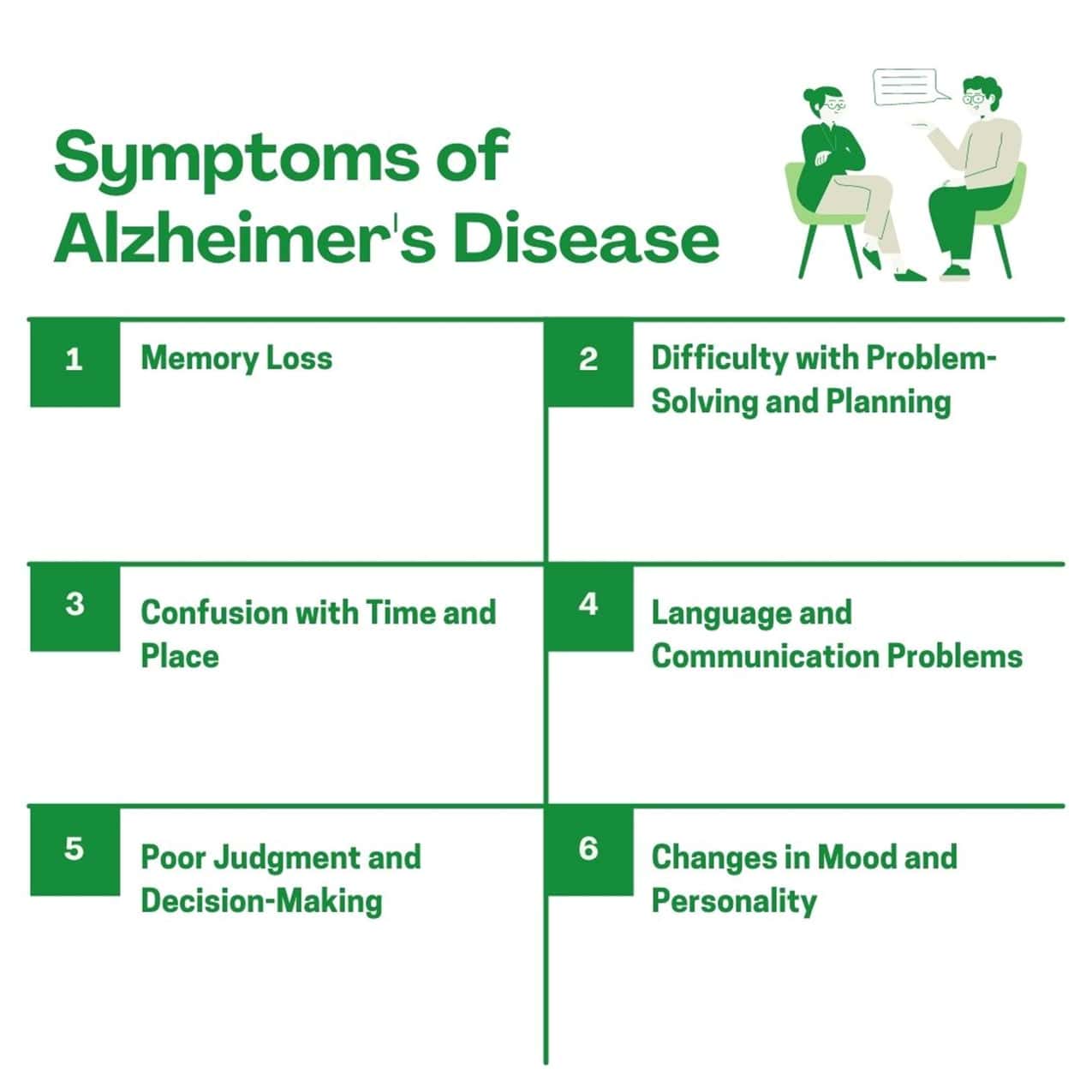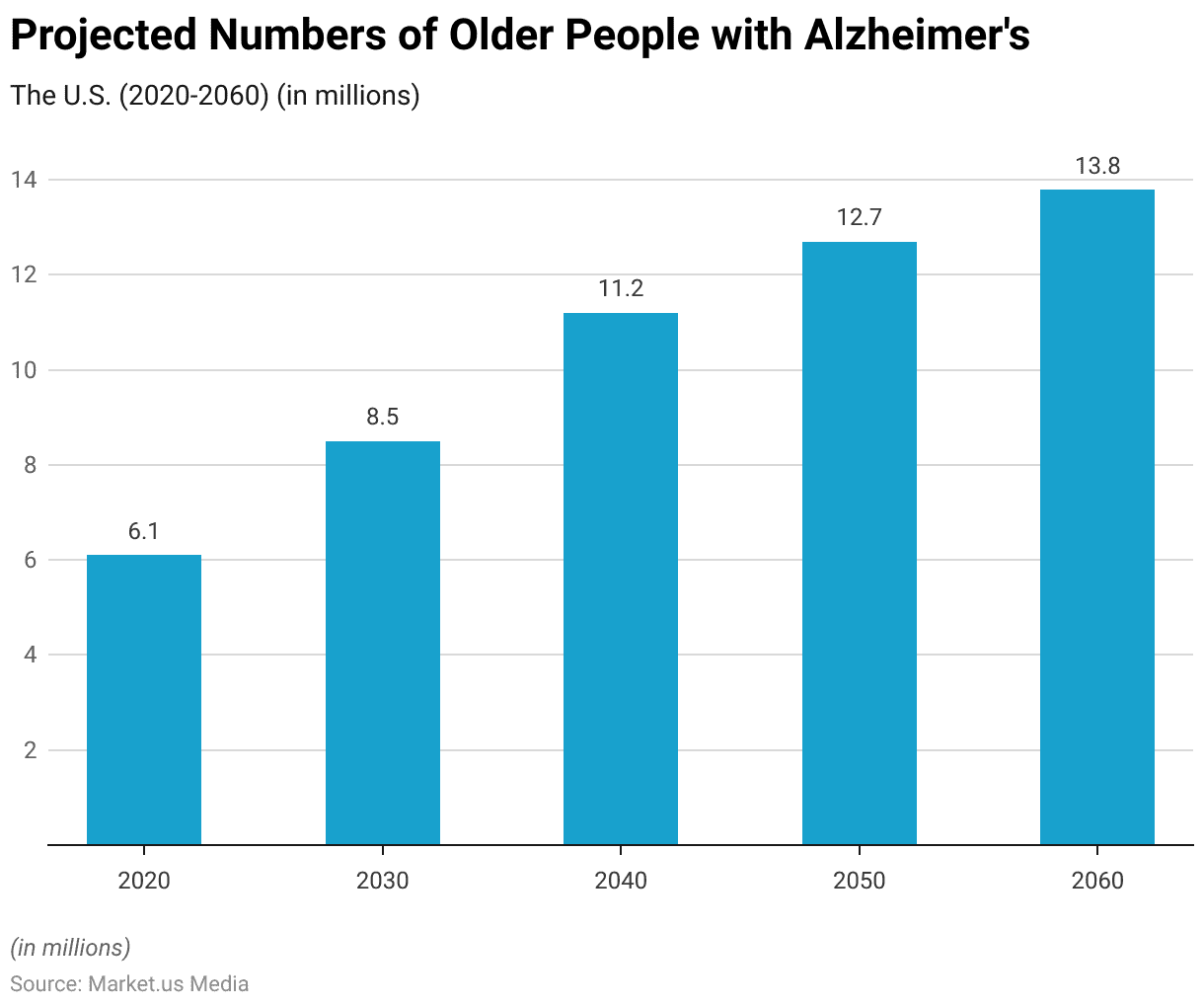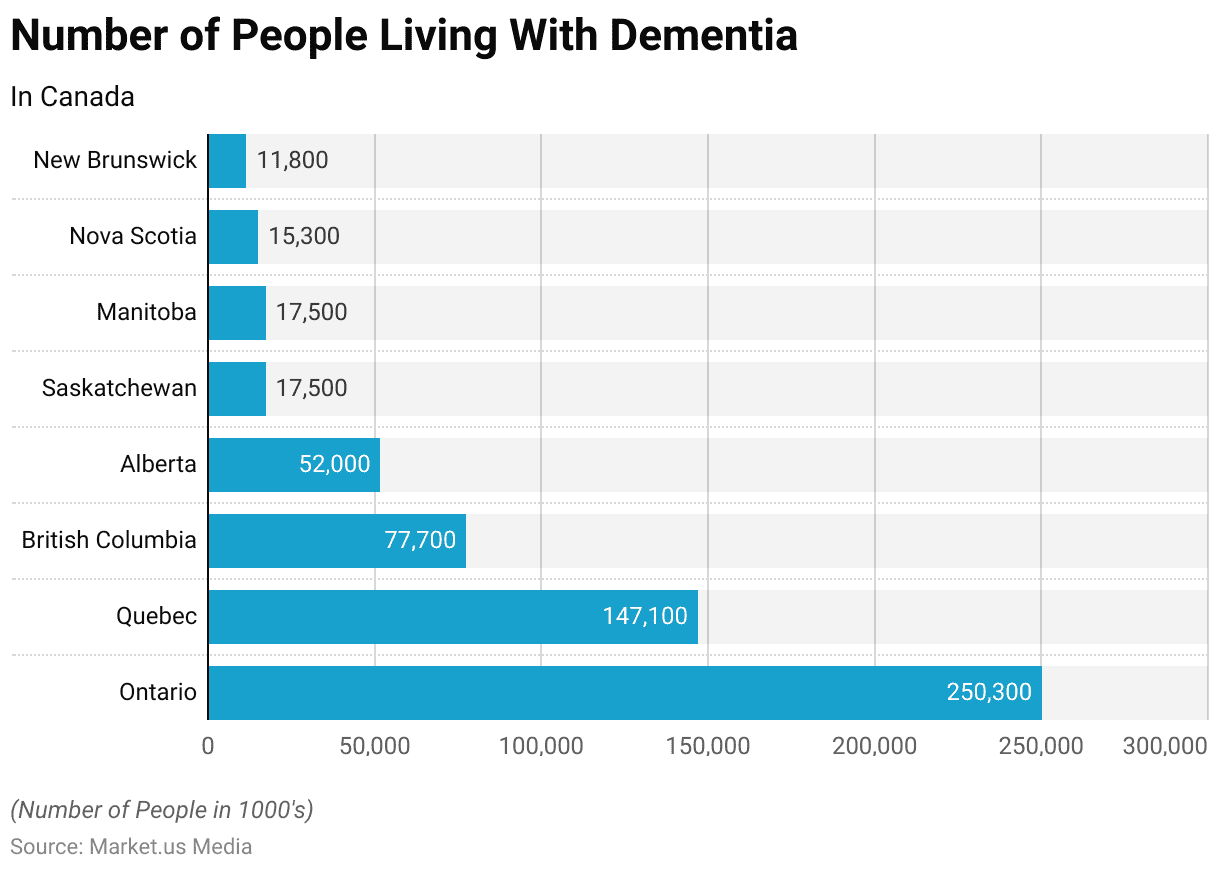Table of Contents
- Introduction
- Editor’s Choice
- How common is Alzheimer’s?
- Alzheimer Disease Statistics – Deaths
- Alzheimer Disease Statistics by Age
- Alzheimer Disease Statistics by Education
- Alzheimer Disease Statistics by Employment Status
- Alzheimer Disease Statistics by Health Condition
- Prevalence and Diagnosis Rates by Race or Ethnicity
- The Economic and Societal Burden of Alzheimer’s Disease
- Alzheimer Disease Statistics by Country
- Recent Developments
- Key Takeaways
- FAQs
Introduction
Alzheimer Disease Statistics: Alzheimer’s disease is a progressive neurodegenerative disorder that primarily affects the brain, leading to memory loss, cognitive decline, and behavioral changes.
It is the most common cause of dementia, accounting for approximately 60-80% of all dementia cases. Alzheimer’s disease typically occurs in older adults, although it can also affect individuals in their 40s or 50s, known as early-onset Alzheimer’s.

Editor’s Choice
- The Global Alzheimer’s Disease Therapeutics Market size is expected to be worth around USD 30.8 Billion by 2033 from USD 5.5 Billion in 2023, growing at a CAGR of 18.8% during the forecast period from 2024 to 2033.
- 5% of people aged 65 to 74 have Alzheimer’s dementia.
- 13.1% of people aged 75 to 84 have Alzheimer’s dementia.
- 33.3% of people aged 85 or older have Alzheimer’s dementia.
- Approximately 6.7 million Americans aged 65 and older are living with Alzheimer’s dementia.
- Without medical breakthroughs to prevent, slow, or cure the disease, the number of individuals with Alzheimer’s dementia could reach 13.8 million by 2060.
- Over 11 million family members and unpaid caregivers provided approximately 18 billion hours of care to individuals with Alzheimer’s or other dementias.
- The value of unpaid dementia caregiving was estimated at $339.5 billion in 2022.
- Approximately 55 million people will have dementia globally in 2022.
- By 2030 the number of individuals with dementia is forecasted to increase from 55 million to an estimated number.
- By 2050 the number of individuals with dementia is expected to reach approximately 139 million worldwide.
(Source: Alzheimer’s Association, Statista)

How common is Alzheimer’s?
- The mortality rate of Alzheimer’s disease has increased by nearly 150% in the past 20 years, with 1 in 3 adults dying from Alzheimer’s or another dementia.
- In 2020, approximately 5.8 million Americans aged 65 years and older were diagnosed with Alzheimer’s disease.
- It is estimated that by 2050, the number of people in the United States with Alzheimer’s dementia will reach 12.7 million.
- Around 11% of people aged 65 years and older, which is approximately 1 in 9 individuals, have Alzheimer’s disease.
- After reaching the age of 80, approximately 1 in 6 people are estimated to develop Alzheimer’s dementia.
- Women are more likely to develop Alzheimer’s disease, with nearly two-thirds of diagnosed cases being women. By the age of 65, it is estimated that 1 in 5 women will develop Alzheimer’s.
- Recent studies indicate that African Americans and Hispanics have a higher risk of Alzheimer’s compared to White people. However, they are less likely to be diagnosed in the United States.
(Source: Alzheimer’s Association, Centers for Disease Control and Prevention, UK National Health Service)
Alzheimer Disease Statistics – Deaths
- In 2021, the mortality rate (adjusted for age) for deaths from Alzheimer’s disease and other dementias was 117 per 100,000 people.
- Mentions of these causes also decreased in 2021 compared to the higher levels observed in 2020.
- In 2021, the highest age-standardized death rate was observed in the oldest age group.
- Among females, the age-standardized death rate in the oldest age group was 5,494 deaths per 100,000.
- Among males, the age-standardized death rate in the oldest age group was 3,990 deaths per 100,000.
(Source: nr-scotland)

Alzheimer Disease Statistics by Age
- Alzheimer’s Association estimates that approximately 6.5 million individuals aged 65 or older had Alzheimer’s in 2022 in the US. Of this population, 73% are aged 75 or above
- Individuals diagnosed with Alzheimer’s before reaching 70 are twice as likely to die before 80 than their counterparts who don’t.
- Once an individual turns 65 years of age or older, their risk of Alzheimer’s doubles every five years, and by 80 years old 1 out of 6 individuals have dementia (which often includes Alzheimer’s).
- In 2019, approximately 3% of adults aged 70-74 were living with dementia; 22% had it among 85 to 89-year-olds and 33% among 90-year-olds.
(Source: Alzheimer’s Association, Alzheimer’s Society, Population Reference Bureau)
Alzheimer Disease Statistics by Education
- Among individuals with a high school education, the prevalence of Alzheimer’s disease is 12.7%.
- Among those with a vocational/trade education, the prevalence is 6.3%.
- Individuals with some college education have a prevalence rate of 25.4%.
- Among those with an associate degree, the prevalence of Alzheimer’s disease is 17.5%.
- Individuals with a bachelor’s degree have a prevalence rate of 20.9%.
- Among those with a master’s degree, the prevalence is 15.9%.
- Individuals with a doctoral degree have the lowest prevalence rate at 1.5%.
(Source: NIH)
Take advantage of our unbeatable offer - buy now!


Alzheimer Disease Statistics by Employment Status
- Among individuals with Alzheimer’s disease, 27% are employed.
- The majority, 69.8%, of individuals with Alzheimer’s disease are retired.
(Source: NIH)

Alzheimer Disease Statistics by Health Condition
- Among individuals with Alzheimer’s disease, 31.8% had diabetes.
- Hypertension was present in 57.6% of individuals with Alzheimer’s disease.
- High cholesterol was reported in 39.4% of individuals with Alzheimer’s disease.
- Only 1.5% of individuals with Alzheimer’s disease had a history of stroke.
- Approximately 9.1% of individuals with Alzheimer’s disease also had heart disease.
- Depression was reported in 7.6% of individuals with Alzheimer’s disease.
(Source: NIH)

Prevalence and Diagnosis Rates by Race or Ethnicity
African Americans
- Reported Alzheimer’s disease prevalence rates among African Americans are 14% to 500% higher than among Whites.
- African Americans are about two times more likely than Whites to have Alzheimer’s disease.
- Prevalence studies in various locations have found higher rates of dementia among African American elderly compared to Whites and Asians.
- Prevalence estimates among African Americans have been as high as 56%, although rates of diagnosed disease are more in the range of 5%-16%.
- An analysis of 2021 Medicare claims data found that older African Americans were more likely than Whites to have a diagnosis of Alzheimer’s disease, with a prevalence rate of 13%.
- Among those with cognitive impairment, 34% of African Americans have been told by a physician that they have a memory-related disease.
(Source: Froehlich et al, Alzheimer’s Association, Health and Retirement Study)
Hispanics
- Hispanics are about 1.5 times more likely than Whites to have Alzheimer’s disease.
- Prevalence studies indicate higher rates of dementia among Hispanic elderly compared to Whites and Asians.
- One study estimated dementia prevalence of 8% among Caribbean Latinos in the 65-74 age group, 28% in the 75-84 age group, and 63% in those aged 85 and older.
- Mexican American men have a significantly higher prevalence of cognitive impairment compared to non-Hispanic White men.
- An analysis of 2021 Medicare claims data found that older Hispanics were more likely than Whites to have a diagnosis of Alzheimer’s disease, with a prevalence rate of 14%.
- Among those with cognitive impairment, 34% of Hispanics have been told by a physician that they have a memory-related disease.
(Source: Alzheimer’s Association, Gurland et al, Samper-Ternent et al, Health and Retirement Study)
Whites, Asians, Native Americans
- Prevalence studies have found lower rates of dementia among White, Asian, and Native American populations compared to African Americans and Hispanics.
- Whites have a prevalence rate of 10% for Alzheimer’s disease based on 2006 Medicare claims data.
- Among those with cognitive impairment, 46% of Whites have been told by a physician that they have a memory-related disease.
(Source: Alzheimer’s Association, Health and Retirement Study)
The Economic and Societal Burden of Alzheimer’s Disease
- According to the 2022 Alzheimer’s Association report, an estimated 11.3 million family and unpaid caregivers of individuals with Alzheimer’s disease (AD) or other dementias provided approximately 16 billion hours of informal (unpaid) assistance, valued at around $271.6 billion.
- The total lifetime cost of care for a patient with dementia is estimated to be $412,936 in 2022 dollars, with 70% of these costs borne by family caregivers. These costs include unpaid caregiving and out-of-pocket expenses for items such as home health support and medications.
- A study by Kelley et al found that the average cost of informal care for patients with dementia was over double the cost of care for patients without dementia. In 2015 dollars, the cost for dementia patients was $83,022 compared to $38,272 for non-dementia patients. Adjusted for inflation, this corresponds to $102,385 and $47,198 in 2022.
- In addition to the financial burden, family caregivers of individuals with AD face chronic stressors that can have health consequences. Women represent 58% of all dementia caregivers, and 42% of caregivers have a household income of $50,000 or less.
Alzheimer Disease Statistics by Country
United States
- In the United States, it was estimated that approximately 6.5 million individuals aged 65 or older had Alzheimer’s disease in 2022.
- Alzheimer’s disease is the sixth leading cause of death in the United States.
- Around two-thirds of individuals diagnosed with Alzheimer’s in the United States are women.
- The estimated total cost of Alzheimer’s and other dementias in the United States in 2021 was $355 billion.
- Approximately 11.3 million family and unpaid caregivers provided 16 billion hours of informal assistance in the United States.
- The risk of developing Alzheimer’s doubles every five years after the age of 65 in the United States.
- African Americans have reported Alzheimer’s disease prevalence rates 14% to 500% higher than Whites in the United States.
- In 2020, there were an estimated 6.1 million older people with Alzheimer’s in the U.S.
- By 2030, the number is projected to increase to approximately 8.5 million.
- In 2040, it is expected to further rise to around 11.2 million.
- By 2050, the projected number of older people with Alzheimer’s is 12.7 million.
(Source: Alzheimer’s Association, Centers for Disease Control and Prevention, Froehlich et al, Statista)

United Kingdom
- In the United Kingdom, it was estimated that around 850,000 people were living with dementia in 2021.
- Dementia, including Alzheimer’s disease, is the leading cause of death in the United Kingdom.
- The annual cost of dementia in the United Kingdom is approximately £34.7 billion.
- Approximately 700,000 people in the United Kingdom are informal caregivers for someone with dementia.
- The prevalence of dementia is expected to increase significantly in the United Kingdom due to the aging population.
- There are regional variations in dementia prevalence, with higher rates observed in certain areas of the United Kingdom.
- Research suggests that the number of people with dementia in the United Kingdom is projected to reach over 1 million by 2030.
(Source: Alzheimer’s Society, Office for National Statistics)
Australia
- An estimated 472,000 people are living with dementia in Australia.
- Dementia is the leading cause of death in Australia, surpassing heart disease and cancer.
- The number of people with dementia in Australia is expected to reach 590,000 by 2028 and over 1.1 million by 2058.
- Unpaid caregivers of people with dementia provide around 1.6 billion hours of care each year.
- The estimated cost of dementia in Australia is around $15 billion per year.
(Source: Australian Bureau of Statistics, Dementia Australia)
Canada
- An estimated 564,000 Canadians are living with dementia.
- Dementia is the 2nd leading cause of death in Canada.
- Unpaid caregivers spend 1.2 billion hours per year providing care to people with dementia.
- The total healthcare system costs and out-of-pocket expenses related to dementia in Canada are projected to reach $16.6 billion in 2021.
- Women represent 72% of Canadians living with Alzheimer’s disease or other dementias.
(Source: Alzheimer Society Canada)

Japan
- An estimated 5.8 million people in Japan are living with dementia.
- Dementia is one of the leading causes of disability and dependency among older adults in Japan.
- The number of people with dementia in Japan is projected to increase to 7.3 million by 2025.
- The total cost of dementia in Japan in 2018 was estimated to be ¥15.4 trillion (approximately $139 billion).
- The number of unpaid caregivers in Japan is expected to reach 8 million by 2030.
(Source: World Alzheimer Report)
China
- China has the largest number of people living with Alzheimer’s disease globally.
- Estimated 10 million people with dementia in China.
- The prevalence of dementia is projected to reach 18 million by 2030.
- A rapidly aging population in China contributes to the increasing burden of Alzheimer’s disease.
- Alzheimer’s and other dementias are major public health challenges in China.
(Source: Alzheimer’s Disease International, Alzheimer’s Disease International)
India
- An estimated 5.3 million people living with dementia in India.
- Prevalence is expected to triple by 2050 due to population aging.
- Low awareness and stigma associated with dementia in India.
- Limited availability of specialized dementia care services.
- The high burden of caregiving falls on family members in India.
(Source: Alzheimer’s Disease International)
Brazil
- Estimated 1.6 million people living with dementia in Brazil.
- Prevalence is expected to double by 2050 due to population aging.
- Brazil faces challenges in providing adequate dementia care and support.
- Limited access to diagnosis and specialized healthcare services in Brazil.
- Growing awareness and advocacy efforts for dementia in Brazil.
(Source: Alzheimer’s Disease International)
Recent Developments
Lecanemab:
- A breakthrough in Alzheimer’s treatment, Lecanemab, a monoclonal antibody, demonstrated efficacy in slowing cognitive and functional decline by approximately 25 to 35 percent over 18 months compared to a placebo in individuals with mild cognitive impairment and mild Alzheimer’s dementia.
- This landmark finding from the Clarity AD trial represents a significant step toward mitigating the progression of Alzheimer’s disease.
Donanemab:
- In the TRAILBLAZER-ALZ trial, Donanemab treatment led to a 32% slower decline on the Integrated Alzheimer’s Disease Rating Scale over 76 weeks, with significant amyloid plaque reduction observed in patients.
- This agent continues to be evaluated in the expanded TRAILBLAZER-ALZ-2 phase 3 trial, aiming to provide comprehensive safety data and confirm its efficacy.
Remternetug:
- An ongoing phase 3 study, TRAILRUNNER-ALZ1, is investigating Remternetug, a monoclonal antibody designed for amyloid plaque clearance.
- Preliminary data showed substantial amyloid plaque reduction, marking it as a promising candidate for early symptomatic Alzheimer’s disease treatment.
Gantenerumab:
- After the failure to meet primary endpoints in the GRADUATE trials for slowing functional decline in early Alzheimer’s, Gantenerumab research shifted focus.
- Current efforts are directed towards exploring its utility in preventing early signs of Alzheimer’s and leveraging brain shuttle technology to enhance drug delivery to the brain.
Investment in Dementia Research:
- The Alzheimer’s Society has announced a record investment in dementia research for 2024, including a yearly grant round and the blood biomarker challenge, underscoring a robust commitment to advancing the understanding and treatment of Alzheimer’s disease.
- This year also anticipates regulatory decisions on Lecanemab and Donanemab in the UK, which could mark a significant milestone in the availability of new treatments.
Microglia and Molecular Subtypes Identification:
- Recent research has identified different microglia subtypes and molecular subtypes of Alzheimer’s, contributing to a deeper understanding of the disease’s complexity.
- This work opens new avenues for targeted treatments and underscores the heterogeneity of Alzheimer’s disease, potentially leading to more personalized approaches to therapy
Key Takeaways
Alzheimer’s Disease Statistics – Alzheimer’s disease is a significant global health concern with a profound impact on individuals, families, and societies.
The prevalence of Alzheimer’s is increasing due to the aging population, and without medical breakthroughs, the number of individuals affected is projected to rise significantly in the coming decades.
The economic and societal burden of Alzheimer’s is substantial, with unpaid caregivers providing billions of hours of care and incurring significant costs.
It is crucial to continue investing in research, support services, and public awareness to improve diagnosis, treatment, and care for individuals with Alzheimer’s and their caregivers.
FAQs
Alzheimer’s disease is a progressive neurological disorder that affects the brain, leading to memory loss, cognitive decline, and behavioral changes. It is the most common cause of dementia.
Alzheimer’s disease is the most common cause of dementia, accounting for approximately 60-70% of all dementia cases. According to the World Health Organization (WHO), there are an estimated 50 million people worldwide living with dementia, and nearly two-thirds of them have Alzheimer’s disease.
Alzheimer’s disease has a significant global impact on both individuals and healthcare systems. It affects not only the person diagnosed but also their families and caregivers. The global cost of dementia, including Alzheimer’s disease, is estimated to be around $1 trillion per year.
Although Alzheimer’s disease is more common in older adults, it can also affect younger individuals. Early-onset Alzheimer’s disease refers to cases where symptoms develop before the age of 65. It is estimated that around 200,000 Americans have early-onset Alzheimer’s disease.
Discuss your needs with our analyst
Please share your requirements with more details so our analyst can check if they can solve your problem(s)



